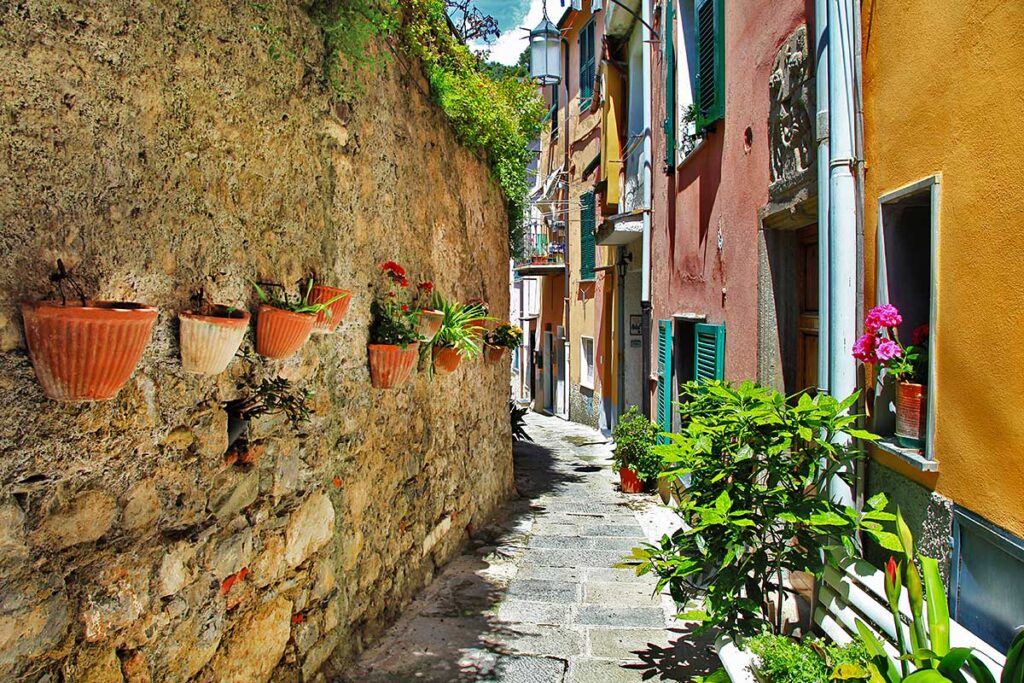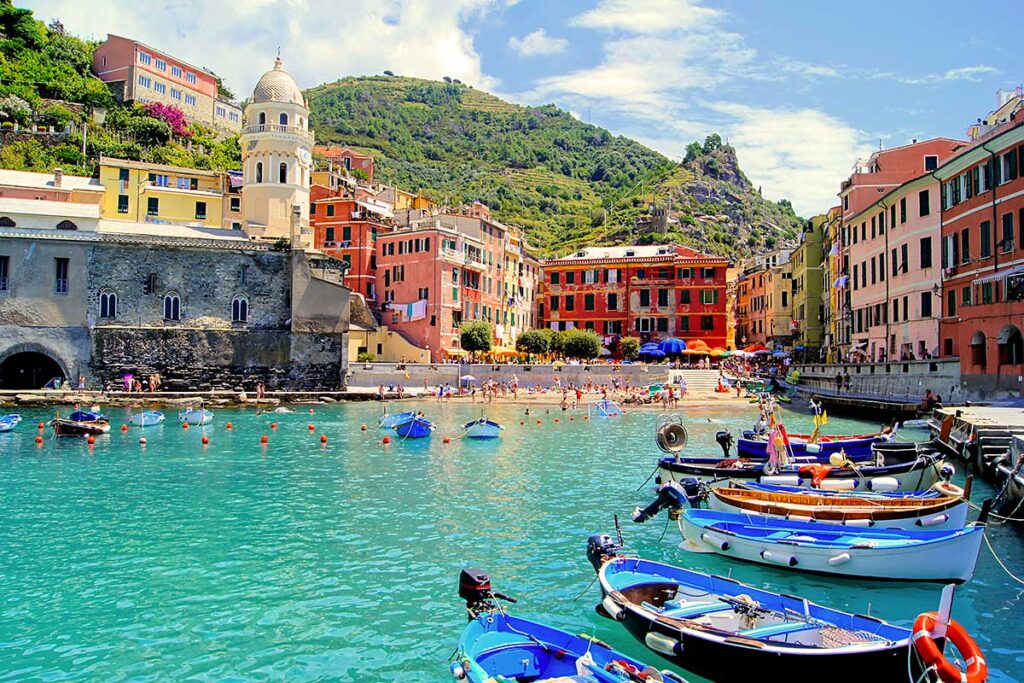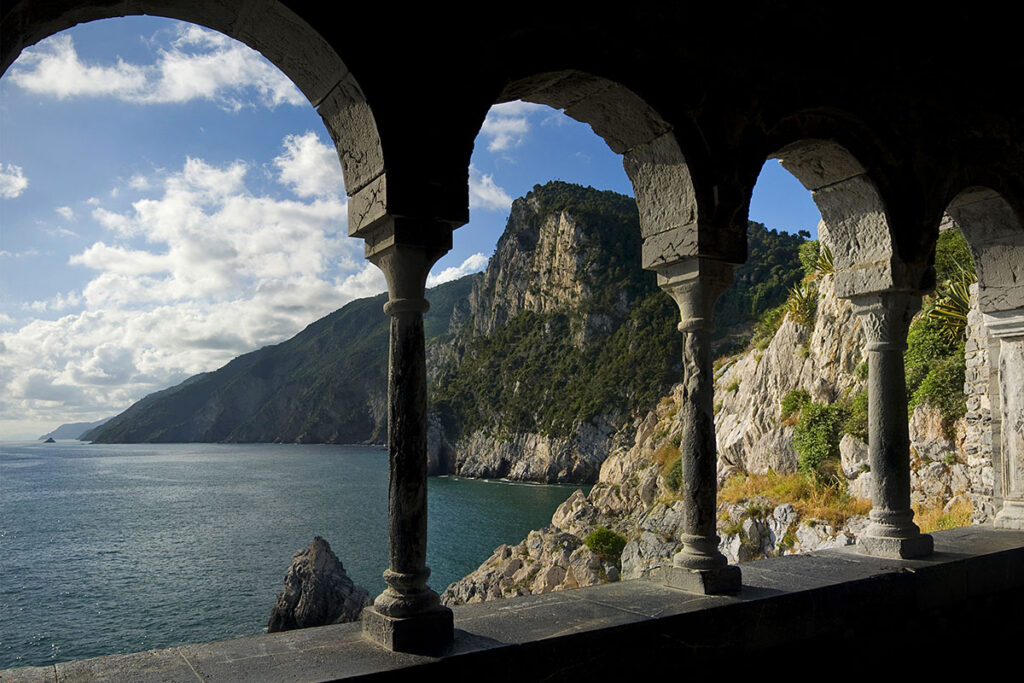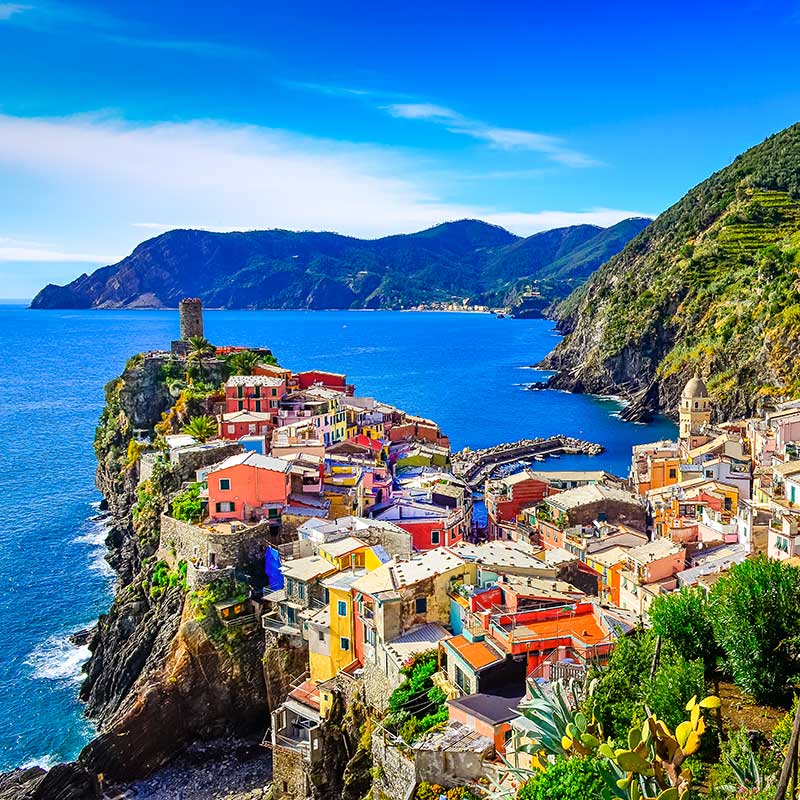Discovering the Cinque Terre: A Guide to Sustainable Tourism
Nestled along Italy’s rugged Ligurian coastline, the Cinque Terre (translated as “Five Lands”) comprises the picturesque villages of Monterosso al Mare, Vernazza, Corniglia, Manarola, and Riomaggiore. This UNESCO World Heritage site is renowned for its colorful cliffside houses, terraced vineyards, and breathtaking sea views. However, the region’s delicate environment requires mindful tourism to preserve its beauty for future generations.
As someone who has spent years exploring and guiding visitors through Italy, I’ve witnessed firsthand the magic of the Cinque Terre—and the challenges it faces. These villages, shaped by centuries of tradition, are both breathtaking and fragile, making responsible tourism essential for their survival.

A Brief History of the Cinque Terre
For centuries, the Cinque Terre villages were isolated from the rest of Italy, accessible only by sea or via steep mule paths. This seclusion fostered a unique culture and way of life, with residents cultivating terraced vineyards and fishing the Mediterranean waters. The construction of the Genoa-La Spezia railway in the late 19th century connected the villages to the broader world, ushering in an era of increased accessibility and, eventually, tourism.
Walking through these villages today, it’s easy to see remnants of the past in their architecture, cuisine, and traditions. Whether it’s the handcrafted dry-stone walls that hold up the terraced vineyards or the scent of fresh anchovies at the market, every detail tells a story of resilience and adaptation.
Environmental Challenges and Conservation Efforts
The 20th century saw a decline in traditional farming practices, leading to the abandonment of vineyards and deterioration of the stone terraces that support the landscape. This neglect contributed to soil erosion and increased susceptibility to landslides. In response, the Cinque Terre National Park was established in 1999 to protect and manage the area’s natural and cultural resources. The region’s inclusion in the UNESCO World Heritage list further underscores its global significance.
Even with these protective measures, conservation remains an ongoing effort. When I bring guests here, I always emphasize the importance of treading lightly—because every step we take leaves an imprint, both literally and figuratively.

Sustainable Tourism: Preserving the Cinque Terre
To ensure that the Cinque Terre remains a vibrant and unspoiled destination, visitors are encouraged to adopt sustainable tourism practices. The World Monuments Fund offers ten guidelines to help travelers minimize their impact:
- Know the History
Before visiting, familiarize yourself with the Cinque Terre’s rich history and culture. Understanding the significance of the villages enhances appreciation and promotes respectful behavior. As a guide, I love seeing how much more engaged travelers become when they learn about the traditions behind what they’re experiencing. - Reduce Your Carbon Footprint
Opt for eco-friendly transportation methods. Within the Cinque Terre, walking, biking, or using public transit reduces environmental impact and offers immersive experiences. In my experience, traveling slowly—whether on foot or by train—allows for a deeper connection to the landscape and local life. - Be Eco-Friendly
Choose accommodations and services that prioritize sustainability. Participating in recycling programs and conserving resources during your stay contributes to environmental preservation. - Respect the Local Culture
Honor local customs and traditions. Dress modestly at sacred sites, engage with residents courteously, and participate in local festivals to gain deeper cultural insights. One of my favorite moments is introducing travelers to local winemakers, whose families have been tending the vineyards for generations. - Go Off the Beaten Path
Explore lesser-known trails and villages to alleviate pressure on popular spots. This approach not only provides unique experiences but also supports the broader local economy. Some of the most rewarding hikes and encounters I’ve had were in places most tourists never reach. - Be Gentle in Your Travel
Stick to marked paths and avoid causing damage to the landscape. Wearing appropriate footwear and refraining from touching or climbing on fragile structures helps preserve the environment. - Don’t Be Flashy with Photos
Use photography responsibly. Ensure that flash photography is permitted, as it can harm delicate artworks. Always seek permission before photographing locals to respect their privacy. - Buy Local
Support local artisans by purchasing handcrafted souvenirs. Avoid buying items of dubious origin, such as potential antiquities, to prevent encouraging illegal activities. If you ever need recommendations, I know plenty of hidden-gem shops with truly authentic crafts. - Join the Cause
Contribute to conservation efforts through donations or volunteer work. Engaging in local projects or supporting organizations dedicated to preserving the Cinque Terre makes a positive impact. - Educate
Share your experiences and knowledge about sustainable tourism. Encouraging others to travel responsibly amplifies efforts to protect cultural and natural heritage sites. When my clients return home, I always encourage them to tell the stories of what they saw and learned—because awareness is the first step toward preservation.
Current Status of Cinque Terre Trails
The Cinque Terre offers a network of hiking trails that connect the villages, providing stunning views of the coastline and terraced landscapes. However, due to natural events and maintenance efforts, trail accessibility can change.
Via dell’Amore (Path of Love)
The iconic Via dell’Amore, a scenic trail connecting Riomaggiore and Manarola, has experienced closures due to landslides. After extensive restoration efforts, the trail was officially reopened on February 14, 2025, symbolizing a renewed commitment to preserving the region’s cultural heritage.
Other Trails
While some lower trails have faced closures for maintenance and safety reasons, alternative routes remain accessible. For instance, the trails from Levanto to Monterosso and from Manarola to Volastra to Corniglia are open, offering hikers diverse experiences. It’s essential to check the current status of trails before planning your hike, as conditions can change due to weather and conservation work.

Practical Tips for Visitors
- Plan Ahead: Research current trail conditions and weather forecasts. The Cinque Terre National Park’s official website provides up-to-date information. (Parco Nazionale Cinque Terre)
- Use Public Transportation: The villages are well-connected by trains and ferries. Utilizing these services reduces traffic congestion and environmental impact.
- Stay Hydrated and Prepared: Carry water, wear appropriate footwear, and be prepared for varying trail difficulties.
- Respect Local Regulations: Adhere to guidelines set by local authorities, including trail access rules and conservation efforts.
Conclusion
The Cinque Terre’s allure lies in its harmonious blend of natural beauty and cultural richness. As visitors, embracing sustainable tourism practices ensures that this enchanting region remains unspoiled for generations to come. By understanding the area’s history, respecting its environment, and supporting local communities, we contribute to the preservation of one of Italy’s most treasured landscapes.
As someone who has walked these paths time and again, I invite you to do the same—with care, curiosity, and a commitment to keeping this paradise intact for years to come.

